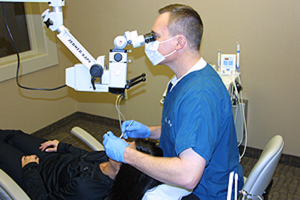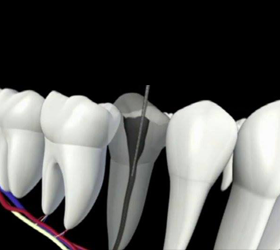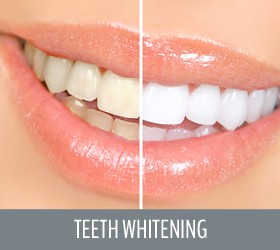Endodontic Services
ROOT CANAL THERAPY

Root canal therapy is perhaps our most common endodontic procedure. Performed properly and in a timely manner, a “root canal” can prevent larger problems in the future, such as dental implants or bridges. When the pulp in the center of your tooth becomes infected due to trauma, deep decay, cracks and chips, or prior dental procedures, you may experience swelling, sensitivity to temperature, or pain near the infection site. If your dentist recommends a root canal, we can remove the damaged pulp, then clean and seal the tooth to maintain its overall integrity. After your root canal, you are referred back to your dentist for follow-up restoration, most likely a crown to protect the repaired tooth.
NON-SURGICAL
ENDODONTIC RETREATMENT

Although endodontic treatment is performed as a permanent and lasting solution, occasionally a tooth that has previously received treatment may require retreatment. Reasons may include, Curved or narrow canals that were not treated initially, Complicated or otherwise atypical canals not detected during initial treatment, Too much time elapsing between procedure and restoration, Failure of the restoration to prevent contamination from saliva, New decay, crack, or other problem affecting the same tooth.
APICAL SURGERY

When root canal therapy or endodontic retreatment cannot resolve the problem with your tooth, we may recommend surgery. Surgery can locate fractures or canals that are not visible even on x-rays, and in some cases damage to root surfaces or the surrounding bone may be treated in this manner. During apical surgery, we make an incision in the gum tissue, which exposes the bone and surrounding inflamed tissue. Then, we remove the damaged tissue and replace the root tip with a root-end filling to prevent reinfection of the root. Finally, we suture the gum, which allows the bone to heal naturally around the root.
BLEACHING OF DARKENED TEETH

Discolored or darkened teeth can sometimes be the result of staining on the interior of the tooth, and no amount of exterior surface whitening will correct this condition. In such cases, we can actually whiten teeth from the inside. In the walking bleach technique, we seal a whitening agent in the pulp chamber of the tooth for a period of several days to a week. After that period, the agent is removed and the tooth resealed prior to final restorative measures. We can evaluate your teeth to determine whether you are a likely candidate for Intracoronal Bleaching.
